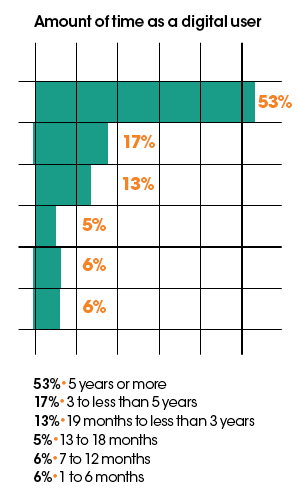The state of digital radiography in the dental practice
Dental Products Report recently talked to digital radiography experts about the current state of digital radiography, exciting emerging technology and products in the field, and what they believe could be coming in the future. Dental Products Report recently talked to digital radiography experts about the current state of digital radiography, exciting emerging technology and products in the field, and what they believe could be coming in t
Dental Products Report recently talked to digital radiography experts about the current state of digital radiography, exciting emerging technology and products in the field, and what they believe could be coming in the future.
To kick things off, Dental Products Report editorial director Kevin Henry spent some time at the ADA Annual Session in San Antonio with Dr. Dale Miles, an oral and maxillofacial radiologist who speaks around the world, primarily on digital imaging including Cone Beam CT. “I read cone beam scans for a living,” Dr. Miles said with a laugh. “I do not own any equipment, but I get volume data to actually interpret and look for occult pathology for all our colleagues out there.”
After the Annual Session, Henry followed up with Dr. Miles to discuss hot issues such as cone beam technology, dental radiation, developments in radiology and the technology that sets practices apart.
Check out their conversation here:
Related reading: The best clinical X-ray products and practices for your dental practice
The experts have opinions, but what does this mean for dental professionals? In addition to speaking with Dr. Miles and other experts (continue to page three to see what the others had to say), DPR asked dental professionals what they liked about radiography, why they made the switch, and why they don't own a piece of equipment that they think might be the best for their practices.
Continue to page two for more...
Continuing the discussion, Dental Products Report also talked to two other digital radiography experts about their thoughts on the current state of digital radiography and what they believed could be coming in the future.
DPR sat down with Dr. Steven A. Guttenberg, president of the Washington Institute for Mouth, Face and Jaw Surgery in Washington D.C. and board-certified oral and maxillofacial surgeon.
Related reading: Why responsible pediatric dental radiography is a must
DPR:What can be done to limit the number of radiography retakes in dental practices?
Dr. Guttenberg: It’s obvious that the number of retakes in any practice should be as close to zero as possible. With proper training, dental professionals can ensure proper positioning of the radiography device. There are plenty of opportunities out there and I really encourage people to check with their local and state dental societies for those bonafide, state-approved learning opportunities.
DPR: It seems like there are always media reports of excessive radiation from dental radiography that scare patients. What can dental professionals do to combat that?
Dr. Guttenberg: Every dental professional should know the facts and have those numbers on hand for the patients. I’ve read many of these “panic articles” and they are one-sided, twisted and unfair. After reading one of those articles, I had a patient blast me in a letter and say he was getting too much radiation from my practice. I had the numbers. I gave him the correct information and he suddenly understood. You have to be able to present facts to the patients to combat the fictional articles and reports that appear.
DPR: If someone is still using film in their practice, what would you say to them about moving to digital?
Dr. Guttenberg: The use of digital radiography is a significant advantage for the environment and gives smaller doses of radiation to patients. Frankly, dosage levels from CBCT scans keep getting lower and lower. I do think everyone will start incorporating CBCT into their practices in the near future. Even if it’s limited field, it can make such a difference for helping our patients.
Related reading: Dr. John Flucke looks forward, back on dental technology predictions for 2014
Next page: DPR talks about digital radiography with Dr. Bruce Howerton.
DPR also sat down with Dr. Bruce Howerton, who received a DDS degree from West Virginia University School of Dentistry and is an oral and maxillofacial radiologist.
On-demand webinar series: How to determine if 3D imaging is right for your dental practice

DPR:What can be done to limit the number of radiography retakes in dental practices?
Dr. Howerton: I think dentists have to be more involved in the acquisition of images. You can’t always just turn it over to the assistant if he/she hasn’t had the proper training. I think they need to oversee the process until they are confident retakes won’t happen.
DPR: Is digital imaging soon to be the “standard of care” for dental practices?
Dr. Howerton: I certainly see it becoming the standard of care for certain diagnostic tasks, especially when it comes to CBCT. For most diagnostic situations, I do believe CBCT will become the standard of care in dental practices in the near future.
Free E-Book: Benefits of portable X-rays in the dental office
DPR: If someone is still using film in their practice, what would you say to them about moving to digital?
Dr. Howerton:The use of chemicals to process film is simply not good for the environment. The amount of radiation used for digital images is far less than some of the film speeds. If you compare the truth in the amount of radiation used in digital radiography versus the amount of radiation from film, it’s very low. I believe the information we gain from using digital radiography far outweighs any concern about radiation exposure.
Related reading: How to optimize a team approach to digital dentistry and CAD/CAM [VIDEO]

